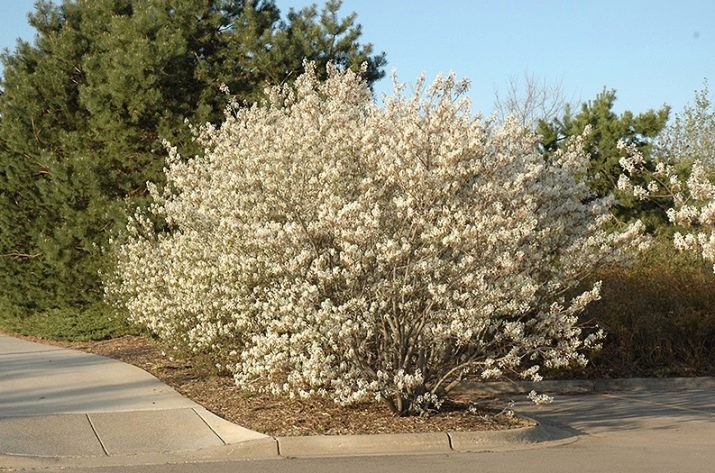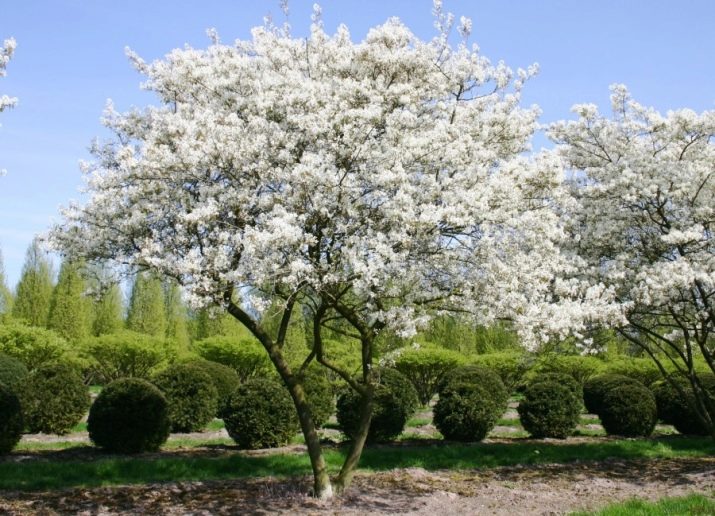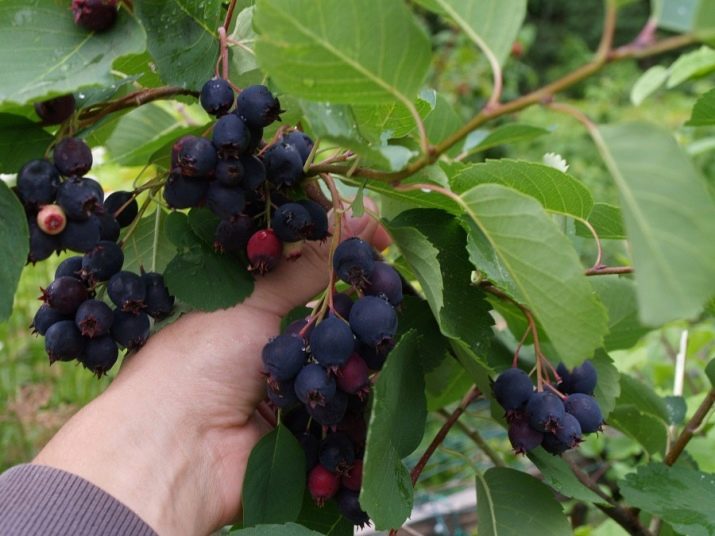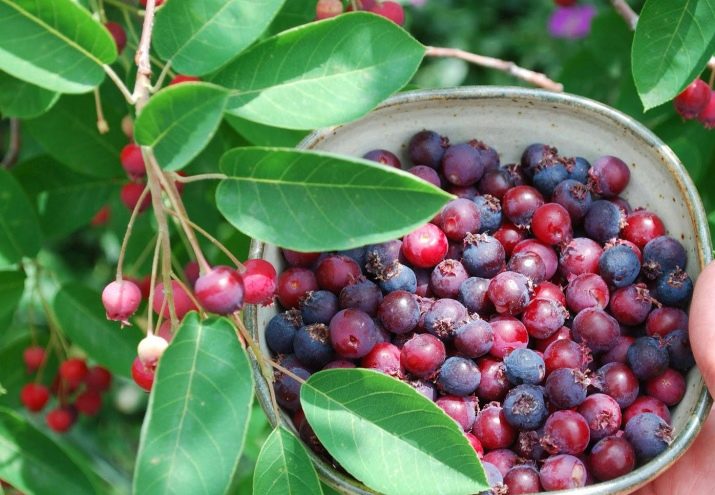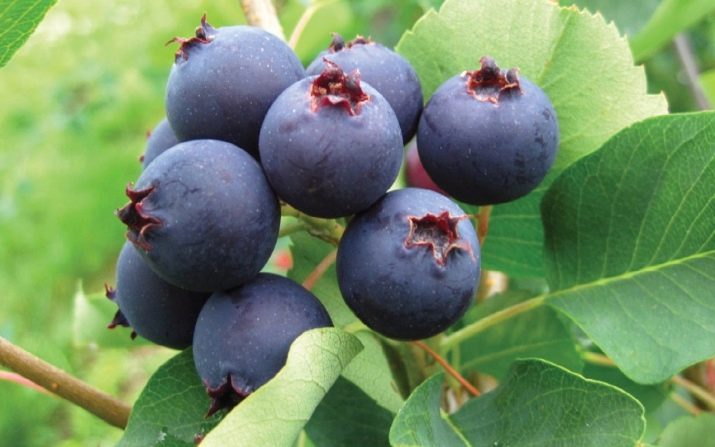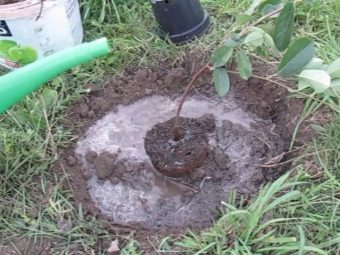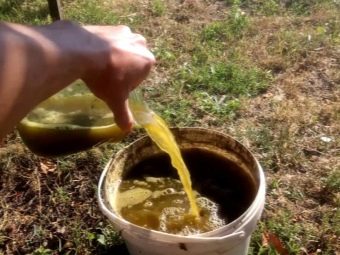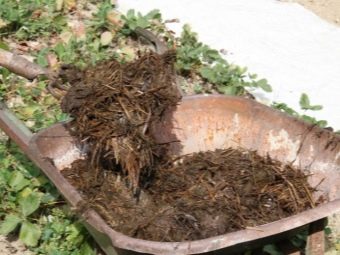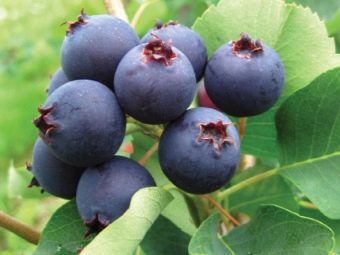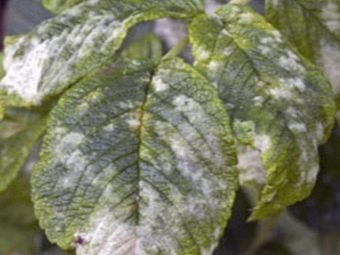Canadian Irga: variety description, planting and care
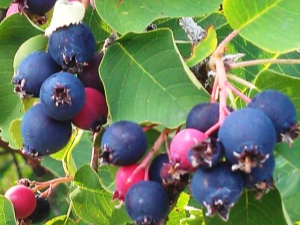
Canadian Irga is a plant that definitely has a place in the garden of any gardener.It is not too whimsical, usually abundantly fruiting, can serve as a decorative hedge and lives for fifty years.
Description
Irga Canadian is a fairly tall shrub, reaching a height of six meters. The tree has a large number of trunks, from three to twenty, the exact number of which depends on the variety. Irga is able to grow up to fifty years, and if one of the trunks dies, then a new one will surely form. The depth to which the roots go, ranges from fifty centimeters to three meters. The diameter of the crown is between two and a half to five meters.
By itself, the "cap" of leaves resembles an umbrella, whose branches look down. The trunks are covered with smooth bark of a pleasant brown shade and most often look curved. Young shoots appear in red. The length of the leaf is approximately six centimeters, and the stem is about one and a half centimeters. They are covered with silver gun and have a rounded oval shape, the top of which is much narrower than the bottom.
Each flower has narrow petals, the diameter of which is about two centimeters. One of the advantages of the Canadian shadberry is the winter resistance of flowers - this crop does not die from frost if the temperature does not fall below -7 degrees. Buds begin to bloom at the end of April, and bloom lasts about fourteen days. Fruiting begins in the third year of the irgi, but a large number of berries appear from the tenth to the thirtieth year of life. On one bush the gardener collects from six to eighteen kilograms of shadberry - again, the exact amount depends on the variety.
The berry itself weighs only one gram, and its width averages sixteen millimeters. The fruit has a neat round shape and sweet taste. Harvest can be in the second half of summer. The maturity of the irgi is easily determined by its color - ripe berries look dark purple, and unripe berries look pink. Blue color is considered transitional. In the composition of shadberry, approximately twelve percent of sugar, 40% of vitamin C, one percent of fruit acids, carotene, and other necessary substances and vitamins are emitted.
The variety is not afraid of either drought or low temperatures - the shrub will survive frosts reaching -40 degrees. It is self-pollinating, which is very convenient, does not express special requirements for the condition of the soil, absorbs noise and is able to grow even in an urban environment. Among the disadvantages of the culture there are problems with uprooting the plant and a long period of fruiting.
Variety review
"Thyssen" is the earliest variety of irgi, because gardeners are beginning to harvest already at the end of the first summer month. The berries themselves have a fairly large size, the diameter varies from seventeen to eighteen millimeters. The taste of "Thyssen" is quite sweet, and it is not even spoiled by sourness, rather, it gives a "refreshing" effect. The height of the bush reaches five meters, and the width - six meters. The only disadvantages of this sort of irgi can be called the fact that it, blooming early, falls into the period of frosts and does not always tolerate them successfully.
Variety "Smokey", on the contrary, it is considered the latest - it begins to bloom only at the end of spring. The height of the bush is four and a half meters, the width corresponds to it. From one bush the gardener receives approximately 25 kilograms of sweet and impatient berries. The diameter of a single fruit varies from 14 to 15 millimeters, its flesh is tender and fleshy, and the peel is colored in a rich blue color. It is possible to add high resistance to numerous diseases to the advantages of the variety.
Krasnoyarskaya refers to late maturing varieties. The height of the bush varies from three and a half to four meters. The berries are harvested at the junction of July and August, and the diameter of one fruit reaches two centimeters. In taste, such righa is rather sweet and moderately sour.Winter hardiness in this variety is very impressive - it does not die in winter at a temperature of -40 degrees. In addition, the popular varieties are “Martin”, “Prince William”, “Ballerina”, “Mandam”, “Rainbow Pillar” and “Starry Night”.
How to plant?
Landing irgi passes on a fairly normal pattern. Its period is determined depending on weather conditions, more precisely, the climate. For example, in the suburbs, irgu are planted in spring, and in the south you can wait until autumn. The soil can be almost any, but it is better not to risk with wetlands. The place should not be in the open sun, but irgu may be planted as a decorative fence.
When the gardener plans to harvest, the wells should be placed in such a way that there is five meters of free space between them. Used seedlings should be smooth, without scratches, with fibrous roots. The best specimens are those who are one or two years old. The bottom of each hole is covered with drainage. Its depth should reach half a meter, and the width should be approximately 60 centimeters.
The soil used is a mixture of humus, sand, peat and soil present on the territory. Immediately, fertilizers can be applied, for example, 400 grams of superphosphate, 100 grams of lime, which fixes alkali, and 150 grams of potassium sulfate. When planting a sapling, it will need to be tilted at an angle of forty-five degrees, and not to deepen the root neck. After adding the soil the area is watered, and the area around the trunk is also mulched.
How to care?
Caring for a Canadian irga in principle is pretty standard. Effective cultivation of culture is impossible without high-quality irrigation. As a rule, during the rains, the roots of the plant independently absorb moisture, but if drought happens, then you will have to irrigate the beds yourself twice a month. Typically, this uses a small diffuser, and goes from twenty to thirty liters. Watering is completed by loosening and weeding, which contributes to a better transportation of oxygen to the roots.
It is necessary to feed the irguka somewhere in two or even three years after planting with mineral and organic fertilizers. At the beginning of spring, about fifty grams of nitrogen fertilizer is usually applied to the zone near the stem, and after the beginning of flowering, foliar feeding is carried out. For this purpose, as a rule, about two grams of boric acid, copper sulphate and zinc sulphate dissolve in ten liters of water. In the summer periodically organic matter is introduced - mullein, litter or herbal infusions. In the autumn, it is worth feeding a culture of 0.5 liters of ash or a combination of 100 grams of superphosphate and 50 grams of potash preparations.
Any fertilization ends with abundant watering.
In early spring, it is necessary to cut off the growth and those branches that are already dying, damaged or create excessive thickness of the crown. During the year it is also necessary to form a crown, for example, cutting off young branches to stimulate the growth of the crown. At the end of autumn, all the dried parts are also removed, the fallen leaves are cleaned, and the soil is dug up. If the plant is mature, it is not necessary to cover it for the winter.
Canadian shadberry propagation is carried out in several ways: with the help of seeds, cuttings, cuttings, overgrown or by division. In the first case, ripe berries gather on the most productive bushes, and seeds are extracted from them. Seeding is carried out in the fall under the film. If the sowing is to take place in spring, then the pre-sowing material will need to be stratified for about three months in fabric bags filled with moistened sand. In the case when it is decided to take advantage of a young growth, the procedure is carried out either in the autumn or in the spring, when the young growth is separated from the main bush.
Cuttings will need to be cut from the end of June to mid-July.The size of this part of the plant should reach fifteen centimeters, and it is selected from five-year or six-year-old twigs straight from the top. Ready cutting first rooted in greenhouses, and in the spring months already transferred to the open ground. Working with layering, you will need to dig up a bush, to separate the long branches of the root system and place them in the previously dug holes. Finally, it will be possible to propagate the irgu if, in March, near the lower branches, dig a suitable hole. Having placed a branch in the recess, it must be pinned and covered with earth.
Diseases and pests
Canadian Irga often suffers from tuberculosis. You can determine this disease if you look at the shoots and leaves - they become bright red, covered with growths, and then wither. The damaged parts of the bush must be cut and destroyed, and then the remaining parts must be treated with copper sulphate or one-percent Bordeaux liquid. The interval between procedures should be ten days. As a preventive measure for the disease, gardeners are advised to promptly remove loose leaflets and prune damaged branches.
Characterized for this culture and a disease such as sulfur rot. On the berries of the affected plant, wet dark spots first appear, which then transform into a gray patina. In order to heal the irgu, it is necessary to use ash or colloidal sulfur, which sprinkles both the plant itself and the soil nearby. The main preventive measure in this case is the reduction of watering. We must not forget about the appearance of multi-colored specks, signaling a fungal disease.
Processing in this case is possible only with purchased fungicides.
To prevent leaf spotting, it will be necessary to treat the irgu with copper sulfate or Bordeaux mixture, but only until the flowers appear. Finally, branches often begin to dry out due to moniliosis. In this case, the affected parts will have to be destroyed, and next year, do not forget to process the bush with solutions with copper.
The main pests that affect Canadian irguus are called the lumberjack, seed, hawthorn, aphids, and moths. As a rule, they can be destroyed only with the help of commercial preparations, and the culture can be protected by properly caring for the culture.
Gardeners reviews
Judging by the reviews, Canadian Irga does not cause gardeners any special problems with cultivation and care. Bushes in a timely manner appear buds, buds bloom and berries appear. The pulp of irgi pretty sweet and not knitting. It is equally suitable for use in raw form, and for numerous pastries, blanks and desserts.
The intricacies of planting and caring for an irga are presented in the following video.

